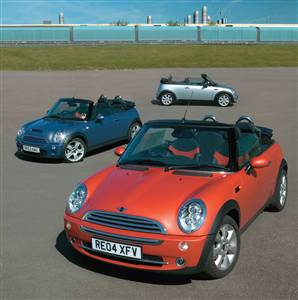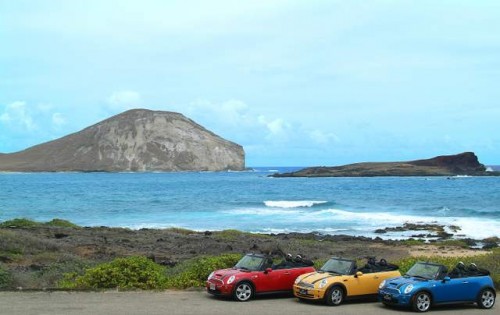BMW Mini Cooper
In 1994, BMW bought over Rover Group, the assets included the name of “Mini”, and also the legendary Mini car designed by Sir Alex Issigonis. Although Mini has already 35 years old, it was stil in production at Longbridge. Rover Group no longer believed in the Mini, but BMW most certainly did, and instructed that an all-new model be developed. The New BMW Mini was designed and styled in 1995, Longbridge-based engineering followed in 1996, and the first Fiat-powered ‘skin’ prototypes were completed in 1997.

The New Mini was still a transverse-engined front wheel drive car as with the original classic Mini, but each component was changed and this was a much larger car than before, it no longer compatible with the word “mini”. The Power of the car came from an engine developed jointly with Chrysler-USA (to be manufactured in Brazil), and the style would follow the original classic mini which is a three-door hatchback build around the front-seat ‘package’ of a BMW 3-Series.

Original planning saw the new car engineered at Longbridge, developed at Gaydon, and to be produced at Longbridge. But then BMW took detail control themselves after 1999. As a consequence of the Rover divorce of March 2000, BMW retained the Mini project, uprooted the all new production machinery already being installed at Longbridge, and transferred it all to Cowley (later rechristened BMW-Oxford).

Although BMW would liked to have airbrushed out Rover’s contribution to the New Mini project, but the fact is that this input was considerable by BMW. However, re-establishing the brand, sorting out production, installing fabulous, state-of-the-art production machinery at Oxford, and selling the new model all over the world was totally to BMW’s credit. Therefore nowadays most of the car lover called it as “BMW Mini”.


By mid of 2005, the 500,000th new generation Mini had been built. This has included Mini One, Mini Cooper, Mini Cooper S and Mini Clubman. With production edging up towards 4,000 cars every week, the success of the project looked assured. BMW assured everyone that the Mini was a unique project, and that it had no intention of introducing other front wheel drive cars, but rumours persist that some sort of “cross-over” engineering might follow the appearance of the second-generation models in the late 2000s.
If you love this article, please PLUS it!
